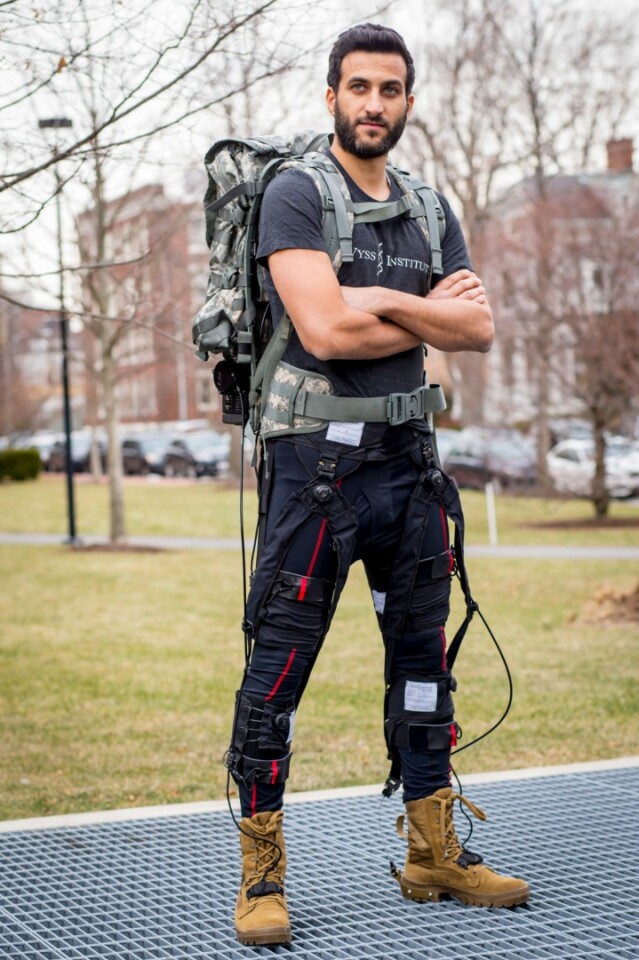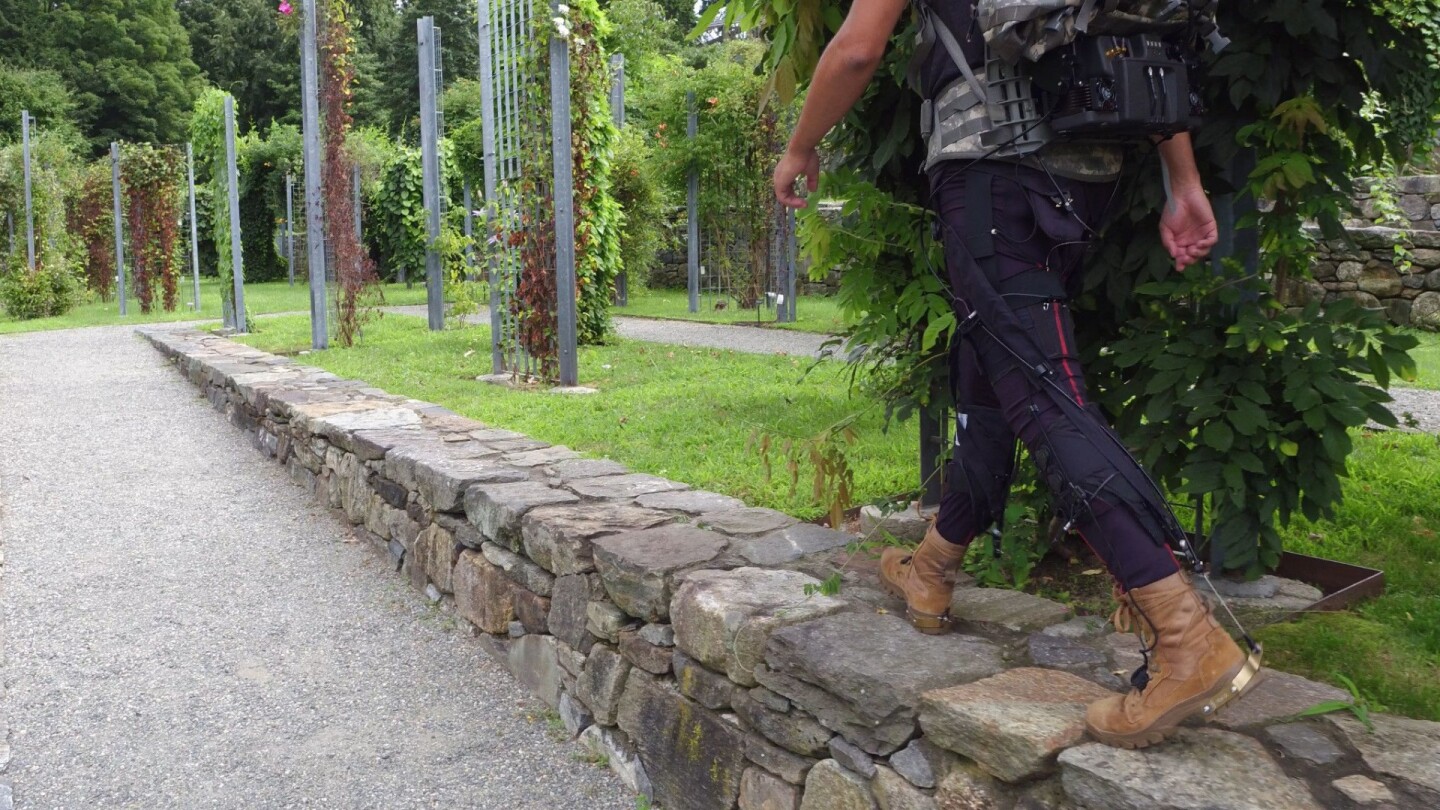Exosuits are basically robots that you can wear, and when it comes to a large number of early prototypes, they're about as comfortable and cumbersome as that sounds. But researchers are working towards more mobile solutions for the everyday user that are based on soft fabrics instead of hard components. Among them is a team of scientists at Harvard's Wyss Institute that has just presented its latest creation, a fully wearable soft exosuit that automatically tweaks its level of assistance on the fly.
Led by mechanical and biomedical engineer Connor Walsh, the Wyss team has been tinkering away at its soft exosuit for more than five years. These types of exosuits promise to both augment the mobility of able-bodied users and serve as a mobility aid for the disabled, but without the extra weight and discomfort of wearing hard, rigid components.
The latest iteration of Wyss' exosuit sees soft textile components wrap around the waist, thighs and calves and hook up to a mobile actuation system built into a backpack. This distributes mechanical forces to the ankle and hip joints via cables and aids leg movements while walking by adding power to the joints. The team says this is a notable upgrade on the earlier version, which we looked at last year.

"We have updated all components in this new version of the multi-joint soft exosuit," says David Perry, part of Walsh's engineering team. "The apparel is more user-friendly, easy to put on and accommodating to different body shapes; the actuation is more robust, lighter, quieter and smaller; and the control system allows us to apply forces to hips and ankles more robustly and consistently."
What's most impressive about the upgrade, however, is an ability to quickly personalize the amount of assistance provided, depending on the actions of the user. Last year, the team was able actually quantify the amount of energy the suit was saving wearers, but has now taken things a step further by enabling it to automatically make adjustments to optimize performance.
As the wearer starts to walk, the system tracks the power distribution to the ankle joints and how much energy it is saving the user. Based on the user's unique gait, the system then makes gradual adjustments to that power until it strikes the sweet spot of optimal assistance.

"We evaluated the metabolic parameters in the seven study participants wearing exosuits that underwent the tuning process and found that the method reduced the metabolic cost of walking by about 14.8 percent compared to walking without the device and by about 22 percent compared to walking with the device unpowered," says first author of the new study describing the system, Sangjun Lee.
The team imagines a raft of uses for this type of exosuit, including lightening the load for fire fighters and rescue workers trekking over rough terrain so they're fresh for the job when they arrive at site. It could also improve mobility for the elderly and people suffering from debilitating disorders. The team's immediate focus, however, is on refining the technology for us by the US Army and factories workers regularly carrying out physically demanding tasks.
The video below shows the exosuit in action, while the research was published in the Journal of NeuroEngineering and Rehabilitation.
Source: Wyss Institute








